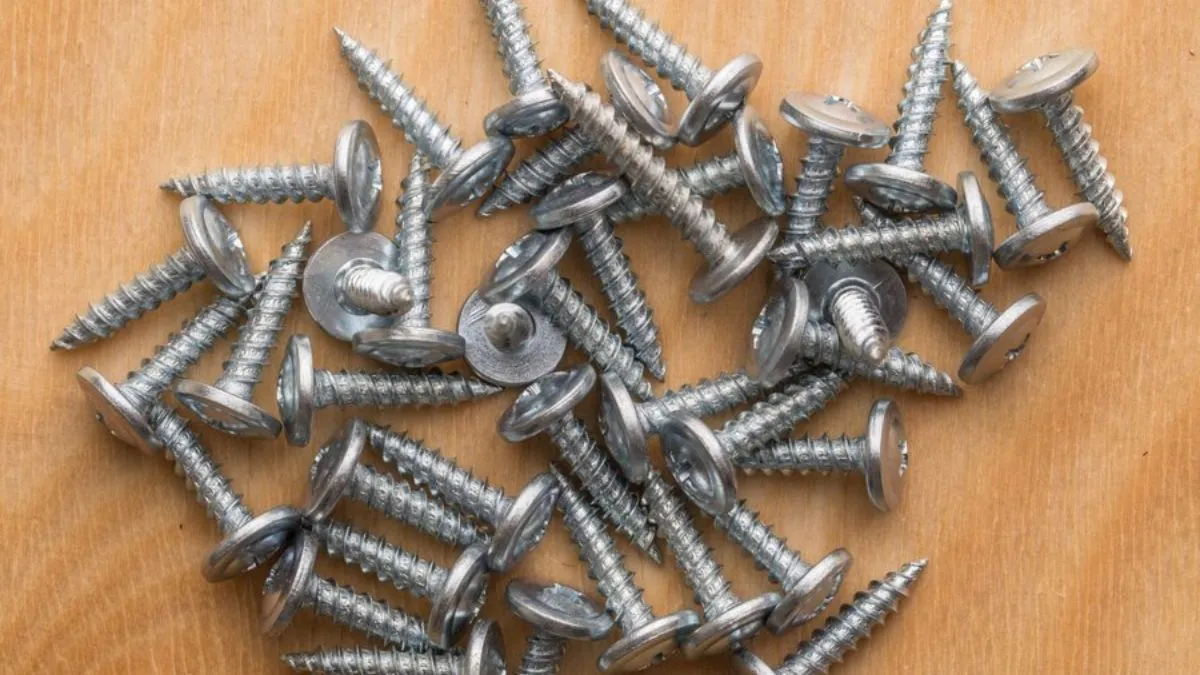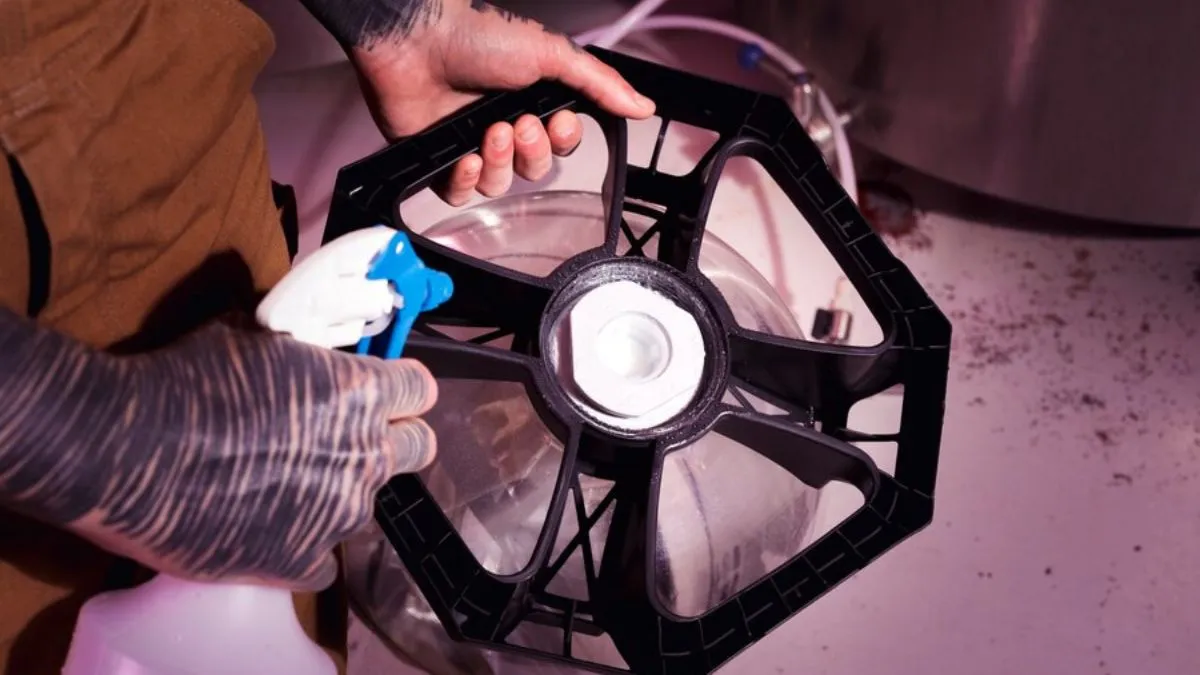Uncategorized
Understanding the 623-483-04 6-Lobe Screw: Design, Applications, and Benefits

Fasteners are essential components in modern construction, manufacturing, and assembly processes. Among the variety of fasteners, the 623-483-04 6-lobe screw stands out due to its unique design and functionality. In this article, we’ll dive deep into what makes the 6-lobe screw so special, its applications, and the specific details of the 623-483-04 model. Whether you’re in the aerospace industry, automotive sector, or any field that relies on secure, durable fastening solutions, understanding the advantages of this screw can improve your operations.
What is a 6-Lobe Screw?
The 6-lobe screw, also known as a Torx screw, is a type of fastener that features a star-shaped pattern on its head. This unique design offers several benefits over traditional screw types, such as Phillips or flathead screws. The six-point star formation ensures:
- Improved torque transmission: The design allows for greater torque without damaging the screw head.
- Reduced wear and tear: The evenly spaced lobes distribute force evenly, minimizing wear on both the screw and the driver.
The 6-lobe screw’s widespread adoption in various industries can be attributed to its reliability, efficiency, and ease of use.
Breaking Down the 623-483-04 Model
The 623-483-04 6-lobe screw is a specific model of Torx fasteners, manufactured to meet precise specifications. While screws in this family share the star-shaped head design, each model, including the 623-483-04, has unique dimensions, materials, and usage recommendations. Here are some key aspects of this particular screw:
- Thread size: Designed for precision assembly applications, this model features a thread size that balances strength and flexibility.
- Material composition: Made from high-grade stainless steel, the 623-483-04 screw is resistant to corrosion, making it ideal for harsh environments.
- Head design: Its countersunk head ensures a flush fit with surfaces, minimizing the chances of catching or damage in assemblies.
These characteristics make the 623-483-04 screw an excellent choice for industries that require precision and durability.
Advantages of 6-Lobe Screws Over Traditional Screws
When comparing 6-lobe screws like the 623-483-04 to other types of fasteners, several advantages become clear:
- Higher Torque Tolerance: The star-shaped design allows for better engagement between the driver and the screw, resulting in higher torque without slippage. This reduces the risk of stripping the screw head, which is common in Phillips or flathead screws.
- Greater Durability: With evenly distributed stress across the lobes, these screws experience less wear over time. This makes them more durable in high-stress applications where standard screws may fail.
- Improved Efficiency: The design of the 6-lobe screw allows users to fasten or unfasten the screw quickly, improving overall efficiency, particularly in assembly-line settings.
- Resistance to Cam-Out: Cam-out occurs when the driver slips out of the screw head during fastening. This is much less likely to occur with a 6-lobe screw due to the snug fit of the driver.
Applications of the 623-483-04 6-Lobe Screw
The versatility of the 623-483-04 screw allows it to be used across multiple industries. Here are some key applications:
1. Aerospace Industry
In aerospace, precision and reliability are paramount. The 623-483-04 screw is frequently used in the assembly of aircraft parts, where its corrosion resistance and durability ensure long-term performance under extreme conditions. Whether in the fuselage, engines, or critical components, this screw plays a crucial role in keeping parts securely fastened.
2. Automotive Manufacturing
The automotive industry demands fasteners that can withstand high stress, temperature fluctuations, and exposure to harsh chemicals. The 623-483-04 model, with its superior torque tolerance and corrosion resistance, is often used in vehicle assemblies, particularly in areas that require long-lasting fastening solutions, such as engine components and suspension systems.
3. Electronics Assembly
Smaller versions of the 6-lobe screw, including the 623-483-04, are also used in the electronics industry. Their precise fit and finish ensure that delicate components like circuit boards remain securely fastened without damaging sensitive parts. The screw’s design allows for secure fastening even in tight spaces, a common requirement in electronics assembly.
4. Construction and Building
In construction, the 623-483-04 screw can be found in applications where reliability and longevity are key. Its corrosion resistance makes it ideal for outdoor or exposed environments, where traditional screws might fail due to rust or weakening over time.
Material Composition and Why It Matters
The 623-483-04 6-lobe screw is typically made from high-quality stainless steel or other corrosion-resistant alloys. This is important because the material used in fasteners directly impacts their longevity and performance. Stainless steel provides several benefits, including:
- Corrosion resistance: Ideal for outdoor use or in industries where moisture and chemicals are present.
- High tensile strength: Ensures the screw won’t break or deform under pressure.
- Temperature tolerance: Stainless steel performs well in extreme heat or cold, making it suitable for diverse environments.
The specific material composition of the 623-483-04 makes it an ideal fastener in environments requiring both strength and durability.
How to Install the 623-483-04 6-Lobe Screw
Proper installation is critical for ensuring the 623-483-04 6-lobe screw performs optimally. Follow these steps for secure fastening:
- Select the Right Driver: Use a Torx driver that matches the size of the screw head. Using the wrong size can result in slippage or damage.
- Pre-Drill if Necessary: If working with hard materials, pre-drilling holes can make installation easier and prevent the screw from bending or breaking.
- Insert the Screw Slowly: To avoid stripping the threads or damaging the material, insert the screw slowly and steadily, applying even pressure.
- Check for Tightness: Once installed, check the tightness of the screw to ensure a secure fit.
Common Issues and How to Solve Them
While 6-lobe screws like the 623-483-04 are generally reliable, there are a few potential issues to be aware of:
- Stripping the Head: Although less likely with a Torx screw, stripping can still occur if the wrong driver size is used. Always match the driver to the screw size to prevent this.
- Over-Tightening: Applying too much torque can damage the screw or the material it’s being driven into. Use a torque wrench for precise application when necessary.
- Rusting in Harsh Environments: While the 623-483-04 is designed to resist corrosion, prolonged exposure to highly corrosive environments can eventually cause rust. Regular inspections and maintenance can help avoid this issue.
Environmental Considerations
The materials used in the 623-483-04 screw are chosen for their durability and resistance to corrosion. However, sustainability is becoming increasingly important in manufacturing. Stainless steel is recyclable, which is a plus for reducing environmental impact. Additionally, ensuring proper disposal of old screws and fasteners can contribute to greener building and manufacturing processes.
Conclusion
The 623-483-04 6-lobe screw is a versatile and highly efficient fastener, designed for a wide range of applications in industries such as aerospace, automotive, electronics, and construction. Its unique star-shaped head provides significant advantages over traditional screw designs, including greater torque tolerance, improved durability, and resistance to cam-out. By choosing the right materials and following best practices during installation, you can ensure that this screw will perform reliably in even the most demanding environments.
FAQs
- What makes the 6-lobe screw better than other screw types?
The 6-lobe design allows for higher torque transmission, reduced wear, and less risk of stripping, making it more durable and efficient than other screws. - Where is the 623-483-04 screw commonly used?
It is used in aerospace, automotive manufacturing, electronics assembly, and construction due to its strength, corrosion resistance, and precision. - Can I use the 623-483-04 screw outdoors?
Yes, its corrosion-resistant material makes it suitable for outdoor use, especially in harsh environments. - How do I avoid stripping the 6-lobe screw?
Use the correct driver size and avoid over-tightening the screw during installation. - Are 6-lobe screws more expensive than other types?
They can be slightly more expensive, but their durability and performance often justify the higher cost.
Technology
Orion Motor Tech Pressure Bleeder For Honda: The Ultimate Tool for DIY Brake Maintenance
-

 Technology10 months ago
Technology10 months agoFacilities That Use Cutting-Edge Medical Technology for Intubation
-

 General10 months ago
General10 months agoCask Technologies LLC Lawsuit: An In-Depth Look into the Legal Battle
-

 Technology10 months ago
Technology10 months ago4416-4420 Technology Drive, Fremont, CA 94538: A Hub of Innovation and Growth
-

 Games10 months ago
Games10 months agoThe Ultimate Guide to Appfordown Games
-

 Technology10 months ago
Technology10 months agoRevo Technologies Murray, Utah: A Leader in Innovative Solutions
-

 Crypto10 months ago
Crypto10 months agoCrypto-Legacy.App Software: Revolutionizing Cryptocurrency Management
-

 Entertainment10 months ago
Entertainment10 months agoThe Ultimate Guide to Rear Seat Entertainment Systems
-

 Games8 months ago
Games8 months agoVanessa-Casino.com Mystical Card Game: A Journey into Enchantment

